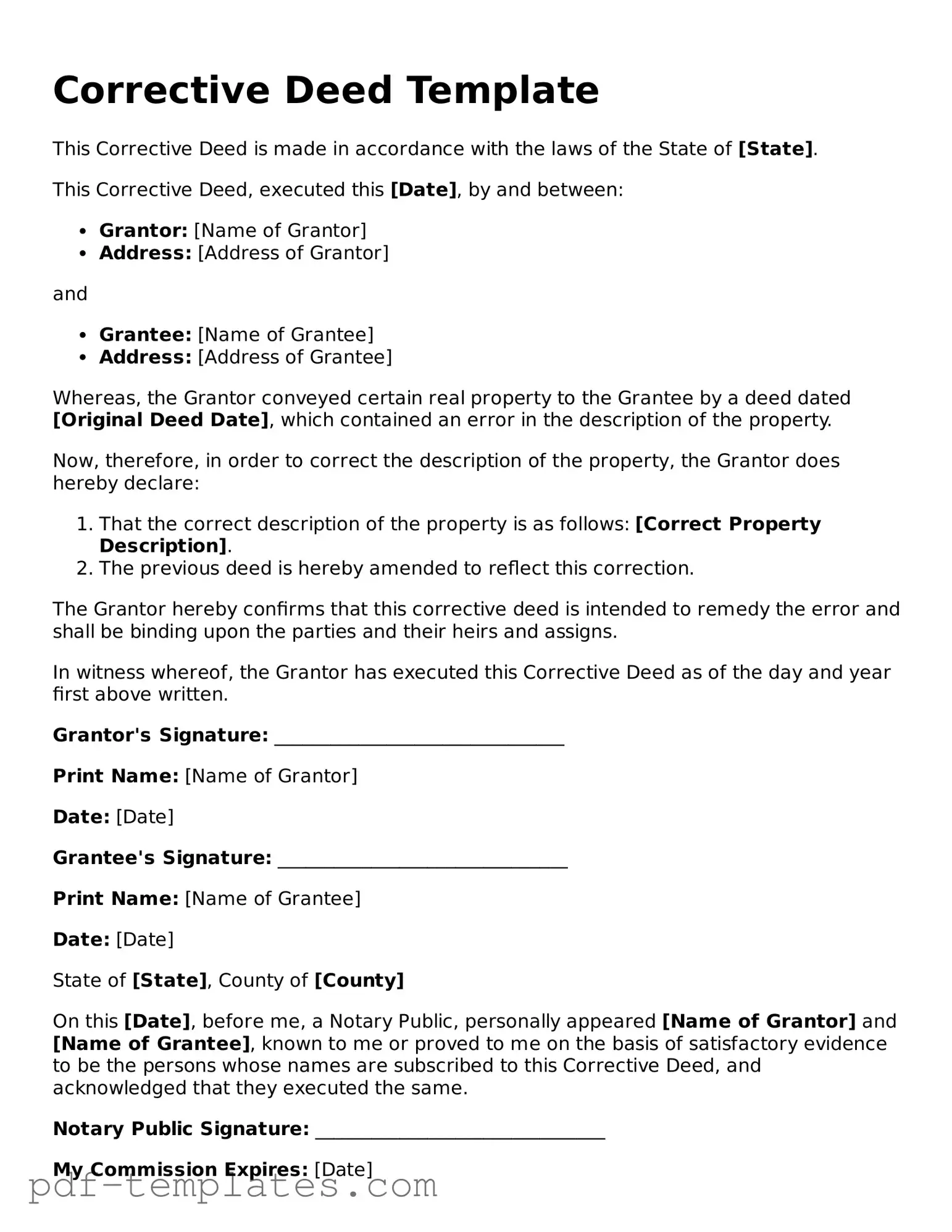The Corrective Deed is similar to a Warranty Deed, which serves to guarantee that the property title is clear of any liens or encumbrances. Both documents are used in real estate transactions to transfer ownership, but while a Warranty Deed provides assurances about the title, a Corrective Deed is specifically aimed at rectifying errors in previously executed deeds. This might include fixing typos in names or legal descriptions, ensuring that the title reflects the true intentions of the parties involved.
Another document akin to the Corrective Deed is the Quitclaim Deed. This type of deed transfers any interest the grantor may have in a property without making any guarantees about the title. While a Quitclaim Deed is often used to relinquish claims, a Corrective Deed is utilized to amend mistakes. Both documents can be used in similar contexts, such as family transfers or to clear up discrepancies, but the intent and assurances provided differ significantly.
The Affidavit of Title is another document that shares similarities with the Corrective Deed. An Affidavit of Title is a sworn statement affirming that the seller has the right to sell the property and that there are no undisclosed liens. While it does not correct a deed, it serves to clarify the seller's position and can complement a Corrective Deed by providing additional assurance about the title's validity.
A Deed of Trust is also comparable in that it involves the transfer of interest in property, but its purpose is primarily to secure a loan. In contrast, the Corrective Deed focuses on correcting prior errors in property documentation. Both documents involve multiple parties, including the borrower, lender, and trustee, but the Corrective Deed is specifically about rectifying past mistakes rather than securing a financial transaction.
When navigating the complexities of property ownership, understanding the variety of documents available is crucial, particularly the Quitclaim Deed. This legal form enables the transfer of property interest without title guarantees, a feature that can be both beneficial and risky. For those interested in acquiring or understanding the Quitclaim Deed, additional resources such as pdftemplates.info/texas-quitclaim-deed-form can provide valuable guidance.
The Release of Lien document shares a functional relationship with the Corrective Deed, as both can be used to clarify property ownership issues. A Release of Lien formally removes a lien from the title, indicating that the debt has been satisfied. This can sometimes accompany a Corrective Deed if the original deed inaccurately reflected the status of any liens on the property, thereby ensuring that the title is clear after corrections have been made.
Similar to the Corrective Deed is the Bill of Sale, particularly when it comes to the transfer of personal property. While a Bill of Sale does not pertain to real estate, it serves as a legal document that transfers ownership of items. Both documents require clear identification of the parties involved and the property being transferred, ensuring that the transaction is legally recognized and binding.
Lastly, the Special Warranty Deed also resembles the Corrective Deed in that it provides limited warranties about the title. This type of deed guarantees that the grantor has not encumbered the property during their ownership. While a Corrective Deed addresses past inaccuracies in documentation, a Special Warranty Deed assures that the title has been clear during the grantor's period of ownership, thus offering a different layer of protection in property transactions.
